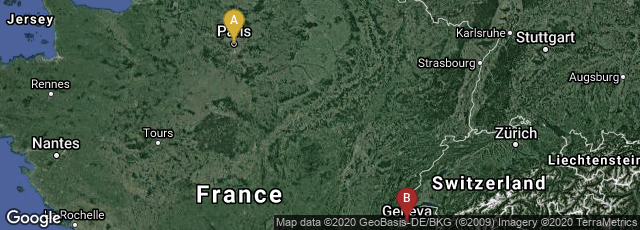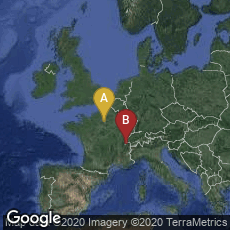In 1832 H. Leon Pelletier, presumably a little known connoisseur /historian of printing since I found nothing about him, issued from Geneva and Paris,
La typographie, poème. Of the 250 pages in this octavo book perhaps only about 40 pages actually included the poem; the remainder consisted of very extensive historical and cultural notes about the history of printing and contemporary printing in France, and an index. The book was attactively printed on paper of high quality, and my copy was inscribed in both in the upper corner of upper printed wrapper and on the half-title. The recipient, "M. de Longpérier," was most probably
Adrien Prevost de Longpérier (1816-1882), the author, according to BnF Data, of numerous works on numismatics and archeology.
One of the various distinctive or perhaps eccentric qualities of this publication was the extensive explanatory subtitle published only on the upper printed wrapper. Had the wrapper not been present on my copy, or possibly on a digitized copy on the web, I would not have read the explanation of this book that Pelletier provided. Because this explanation only appeared on the printed wrapper in my opinion it was likely an after-thought:
"Notes historiques et observations sur le gout-pratique dans cet art et sur la puissance morale de la presse. Remarques sur les améliorations que l'art a subies, sur plusieurs produits bibliographiques célebres, sur les moyens de donner du prix aux livres franćais, sur la nécessité absolue de l'instruction pour se distinguer dans l'imprimerie, table analytique. A l'usage des amateurs de l'art typographique et d'éditions soignées." ["Historical notes and observations on the taste-practice in this art and on the moral power of the press. Notes on the improvements that the art has undergone, on several famous bibliographical works, on the means of giving value to French books, on the absolute necessity of instruction to distinguish oneself in printing, analytical table. For the use of the amateurs of the typographic art and quality publishers."]
I was attracted to this unusual work because of its various notes relatively early in the industralization of printing, on the production of printing machines powered by hand-cranks and steam engines in France. Pelletier comments upon the development of printing machines in England and particularly mentions machines built by Thonellier and Selligue in France. Because details of these machines would have been little-known outside the printing trades in France in those early years I think it is reasonable to assume that M. Pelletier was somehow involved in the printing trades.

